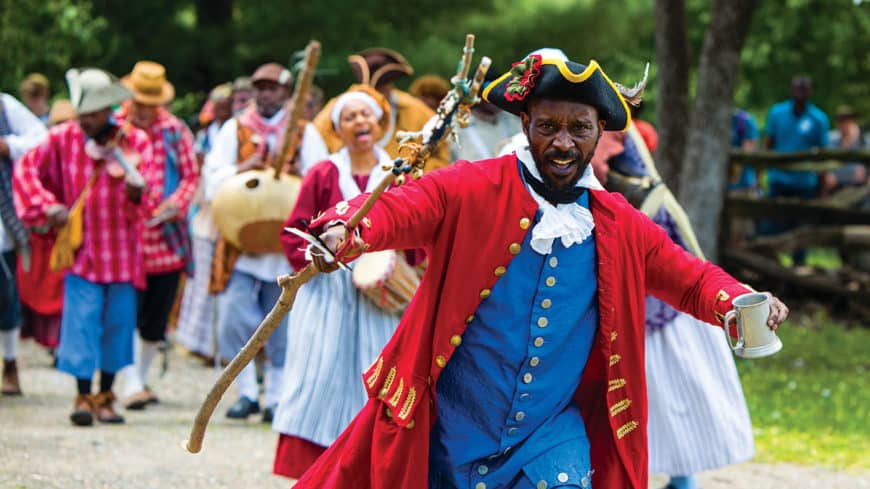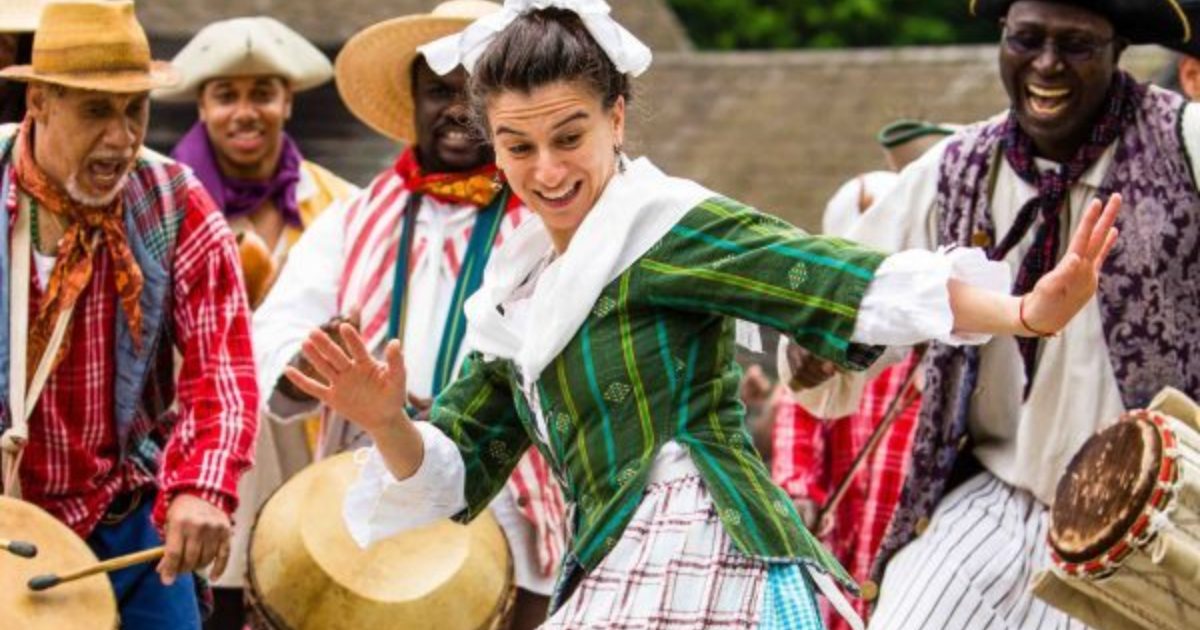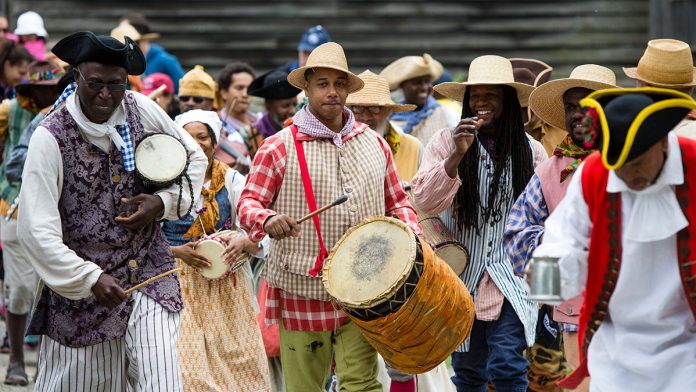Pinkster celebrations were an annual spring-time event in colonial New York and New Jersey. Now, Pinkster traditions are being revived as 21st century Americans learn more about the lives of early African-Americans.
New Holland and New Amsterdam Retain Dutch Customs
In the 1600s, Holland established New Holland in North America in the area now covered by the states of New York and New Jersey. In the age of competing empire building, England, France and Spain, like Holland, looked to the recently discovered “New World” to expand their political and economic strength. Colonists from all countries brought their traditions with them.
The first Dutch settlement in New Holland was New Amsterdam, the city that would later become New York. Throughout the Dutch colony, from Manhattan up the Hudson River Valley to modern day Albany, Dutch settlers retained their religious and secular customs, traditions and holidays.
Pinkster, the Dutch Pentecost

Pinkster is the Dutch word for Pentecost, the seventh Sunday after Easter Sunday in the Christian calendar. According to the Bible’s Book of Acts, the Holy Spirit descended on Jesus’s followers on Pentecost, enabling them to “speak in tongues” and spread the good news of salvation and redemption. In medieval and early modern Holland, the Pinkster holiday was marked during the month of May by several days of revelry and relaxation.
Slave Trade and New Amsterdam
From the beginning, New Holland, like all the European colonies, depended on slave labor: enslaved Africans literally built the developing colonial cities. In New Amsterdam, the somewhat tolerant Dutch gave slaves some freedoms, allowing them to bargain for or purchase manumission, to own land and even to participate in public community events.
Slaves, and some free Africans, joined the Dutch colonists in Pinkster celebrations.
Pinkster in Colonial New York
Pinkster festivities extended for almost a week. They became occasions when people of African descent could travel to see friends and family members, gather together and exchange news. In addition, these gatherings were marked by storytelling, music and dance. Though Pinkster began as a Dutch Christian holiday, slaves used it as an opportunity to perpetuate cherished African customs and traditions.

By the time New Amsterdam ceded peacefully to the British in the late seventeenth century and became New York, the colony was inhabited by people of many European nations, indigenous Americans and free and enslaved Africans from many parts of Africa; it was a place of many languages, ethnicities and religious traditions.
Pinkster was celebrated by Dutch-descended and African-descended people alike.
Pinkster Wanes
But the holiday did not last long after the colonial era.
Dutch and British colonists worried that Pinkster was becoming too wild and frivolous and too removed from any serious religious significance.
Another concern, based on colonial and early American fears of slave rebellions, caused African-descended people’s participation in Pinkster celebrations to be viewed with suspicion. Strict ordinances and laws were put in place forbidding slave gatherings, even for religious purposes. Inevitably, as slavery conditions became increasingly fractured and abusive in colonial New York and the early republic, Pinkster as an sort of occasion for festivity and community became impossible.
Pinkster Now
In twenty-first century America, especially New York and New Jersey, Pinkster is being celebrated again.
African-Americans have rediscovered the festive holiday and embrace Pinkster dance and song customs as a reconnection with their African history and heritage. Contemporary Pinkster celebrations, such as the famous Philipsburg Manor’s annual Pinkster festival, also enable all Americans to better understand Africans’ contributions to the building of our colonial America and the United States as a whole.


















